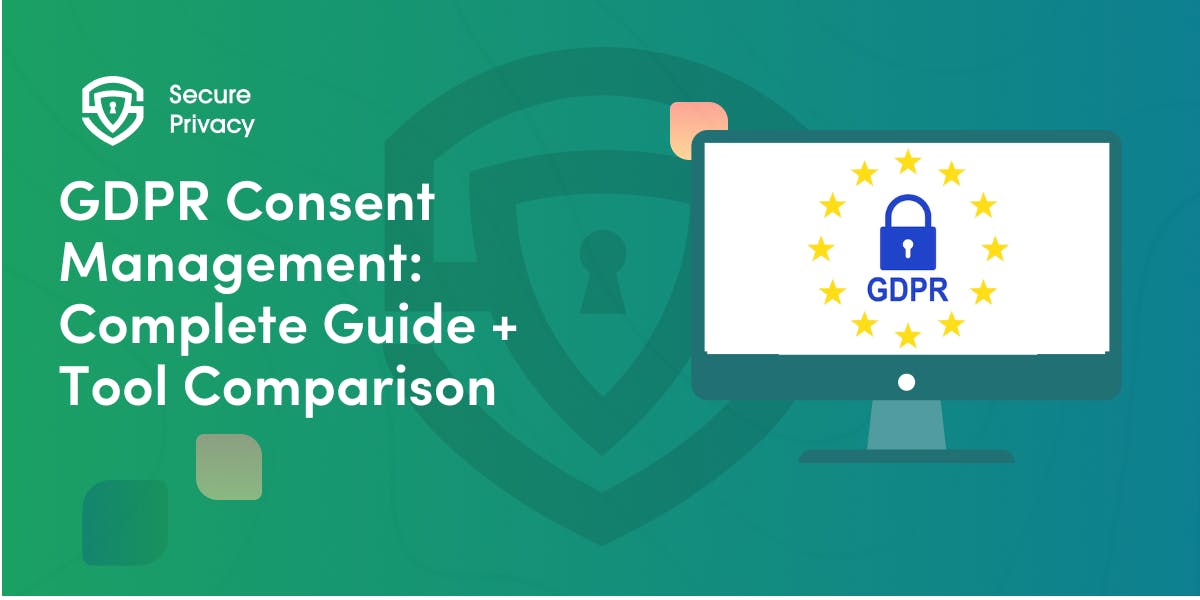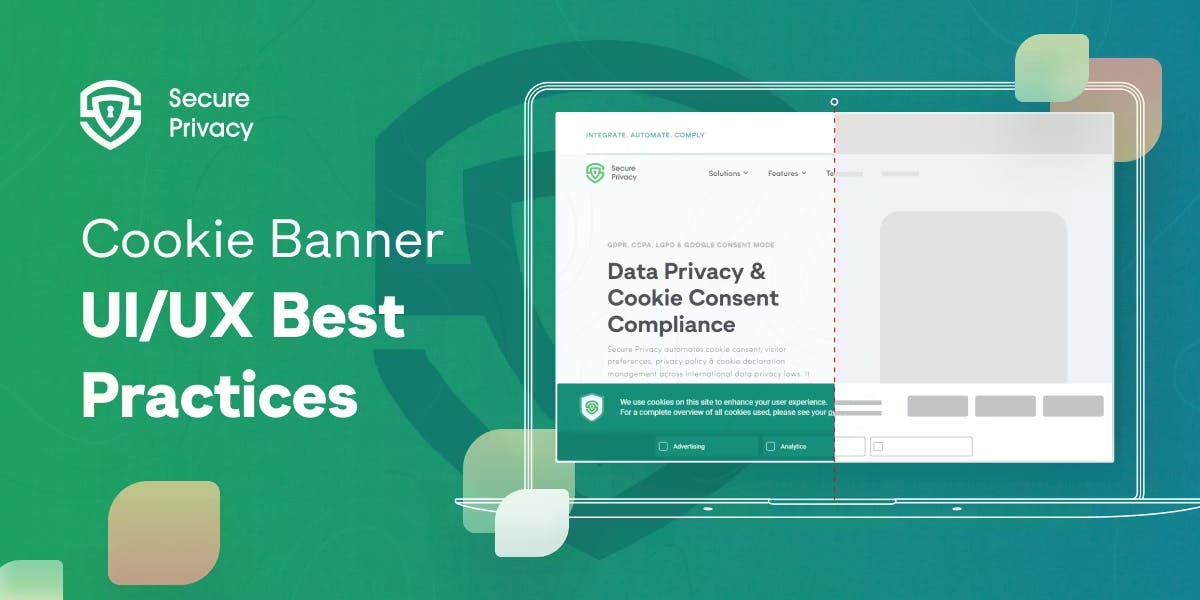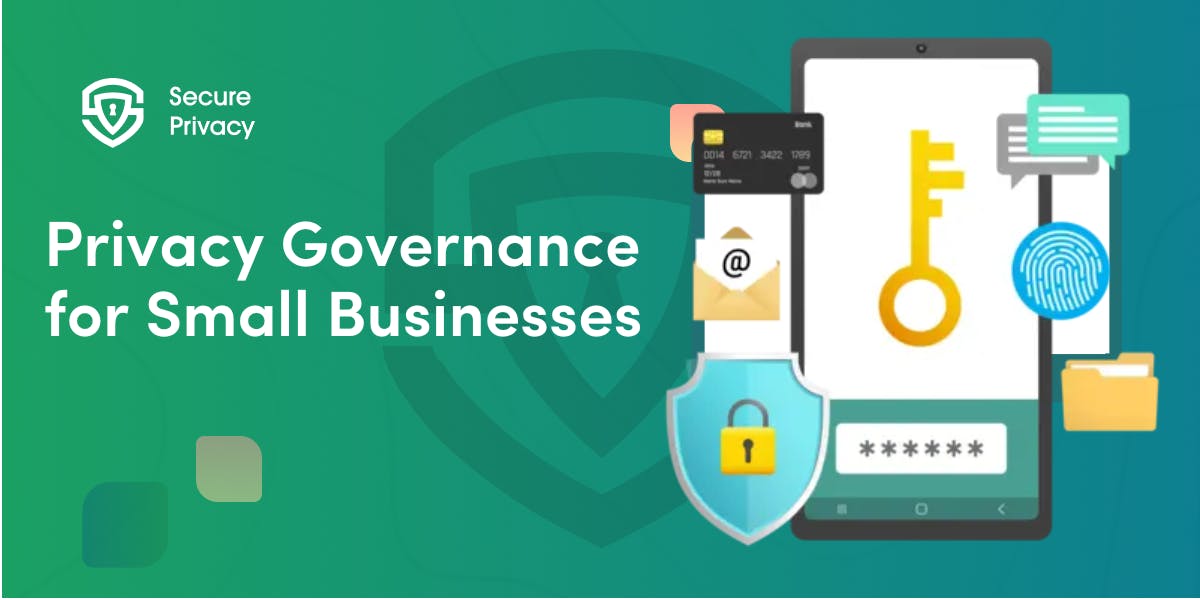How to Create a Cookie Policy for Your Website (With Examples)
Your website is probably using more cookies than you realize, and each one could be a compliance violation if not properly disclosed. If you're still operating without a comprehensive cookie policy or relying on generic templates from 2018, you're exposing your business to fines while confusing users.
Learning how to create a cookie policy doesn't require legal expertise or weeks of research. These documents have evolved from simple disclaimers to detailed legal requirements that must accurately reflect your website's actual tracking behavior.
With privacy regulators actively auditing disclosures and fining companies for inaccurate or incomplete documentation, getting this right has become business-critical. Modern approaches use automated scanning and dynamic generation to ensure your documentation stays current with your website's actual usage while meeting legal requirements.
What Is a Cookie Policy and Why Do You Need One?
Legal Foundation and Requirements
A cookie policy is a legal document that transparently discloses what tracking technologies your website uses, why you use them, and how users can control their preferences. Understanding the cookie policy vs privacy policy distinction is important: while privacy statements cover all data processing, these documents focus specifically on tracking technologies.
Legal requirements vary by jurisdiction but generally include the GDPR and ePrivacy Directive in Europe, CCPA in California, and emerging state privacy laws across the US. These regulations require explicit disclosure of tracking usage before deployment, making documentation essential legal infrastructure.
Enforcement has intensified significantly with regulators specifically targeting inaccurate disclosures. Companies face fines when their documentation doesn't match their actual usage, making accuracy crucial for compliance protection.
Business Benefits Beyond Compliance
User trust building occurs when visitors understand exactly what tracking happens on your website and feel confident that you're being transparent about data collection. Clear documentation demonstrates respect for user privacy and can actually improve conversion rates.
Competitive differentiation emerges in privacy-conscious markets where transparent data practices become selling points that attract customers away from competitors with poor privacy documentation.
Essential Components: What to Include in a Cookie Policy
Core Elements
Definitions and explanations should start your documentation with clear explanations of what tracking technologies are and why websites use them. Use plain language that normal users can understand rather than technical jargon that creates confusion.
Comprehensive inventory must list every tracking technology used on your website including the name, purpose, provider, duration, and category. This should be detailed enough that users understand what data collection occurs during their visit.
Category-based organization helps users navigate your tracking usage by grouping technologies into standard categories:
- Strictly necessary for basic functionality
- Functional for enhanced features
- Analytics for performance measurement
- Marketing for advertising and personalization
Each category needs clear explanations and examples of specific technologies.
Required Legal Elements
User control mechanisms must explain how visitors can manage their preferences, including browser settings and your consent management platform. This addresses cookie consent vs policy requirements by connecting disclosure with user control.
Third-party disclosure requires identifying external services that place tracking technologies on your website, including analytics platforms, advertising networks, social media widgets, and other integrated services.
Contact information should provide clear ways for users to ask questions about your practices. Update information must include the last revision date and explain how users will be notified when practices change.
Technical Requirements and Cookie Disclosure Requirements
Duration information should specify whether tracking technologies are session-based or persistent. Include retention periods for different types to meet comprehensive cookie disclosure requirements.
Data processing purposes need detailed explanations of how tracking data gets used, whether for website functionality, analytics, advertising, or other business purposes. Vague descriptions don't provide sufficient transparency.
Legal basis documentation should explain the legal justification for each category, whether consent, legitimate interest, or contractual necessity.
GDPR Cookie Policy Example and Compliant Structures
Short-Form Documentation Example
Essential section: "We use essential technologies to enable basic website functionality including user authentication, shopping cart persistence, and security features. These are necessary for our website to operate and don't require your consent."
Analytics section: "With your consent, we use Google Analytics to understand how visitors interact with our website. These technologies collect anonymized information about page views, time spent on pages, and user journeys that help us improve website performance."
Marketing section: "When you consent to marketing technologies, we use Facebook Pixel and Google Ads to show you relevant advertisements on other websites. These track your interests and behavior to personalize advertising content."
Comprehensive Policy Structure
Detailed tables should include columns for name, provider, purpose, category, duration, and consent requirement.
User instruction sections provide step-by-step guidance for managing preferences through your consent management platform, browser settings, or other available controls. Regular update commitments explain how often you review usage and update content to maintain accuracy as your website evolves.
Where to Place Cookie Policy on Site: Strategic Display
Essential Placement Requirements
Footer links should include prominent links on every page where tracking might be deployed. Users need easy access to information regardless of which page they visit first.
Consent banner integration must include direct links to your full documentation from your consent banner, allowing users to review detailed information before making consent decisions. This integration addresses where to place cookie policy on site while supporting user choice.
Navigation menu inclusion in privacy-related sections helps users find information when they're specifically looking for privacy documentation.
User Experience Considerations
Mobile optimization ensures documentation remains readable and navigable on small screens. Mobile users represent the majority of website traffic, making mobile-friendly documentation essential.
Clear section headers and logical organization help users navigate to relevant information quickly, improving user experience while ensuring comprehensive coverage.
Manual vs Cookie Policy Generator Approaches
Manual Policy Creation
Complete control over policy content allows for customized language, specific explanations, and branded messaging that aligns with your company's communication style.
Time-intensive process requires researching every tracking technology on your website, understanding their purposes, identifying providers, and writing accurate descriptions. This process often takes weeks for comprehensive websites.
Accuracy challenges emerge when manual documentation becomes outdated as websites add new tools, integrate additional services, or modify existing tracking. Legal risk exposure increases when manual documentation doesn't reflect actual usage, creating compliance gaps that regulators can identify and penalize.
Automated Policy Generation
Real-time accuracy ensures your documentation always reflects your website's current usage through automated scanning and updates that happen without manual intervention.
Comprehensive coverage through automated scanning identifies cookies that manual audits often miss, including those loaded conditionally or by third-party services. Regulatory compliance automation keeps policy language current with evolving legal requirements and best practices across different jurisdictions.
Using a Cookie Policy Generator for Efficiency
Automated Scanning and Detection
Comprehensive website analysis identifies all tracking technologies currently deployed on your website, including those loaded by third-party services, conditionally loaded scripts, and technologies that only appear under specific user interactions.
Real-time monitoring continues tracking changes as you add new tools, modify existing integrations, or remove tracking technologies, ensuring your documentation stays current automatically. Category classification automatically organizes detected technologies into appropriate categories based on their purpose, provider, and functionality.
Dynamic Policy Creation
Template-based generation creates professional documentation using legally compliant templates that incorporate your specific usage and business information.
Multi-language support provides documentation in multiple languages for international websites, ensuring compliance across different markets and user bases. Customization options allow you to modify generated content while maintaining legal compliance, balancing automation benefits with brand-specific messaging needs.
Best Practices for Cookie Policy Success
Content and Communication
Plain language usage makes cookie policies accessible to normal users rather than requiring legal expertise to understand your data practices. Avoid technical jargon and explain concepts in everyday terms.
Specific purpose descriptions provide concrete explanations of how different cookies improve user experience, enable website functionality, or support business operations. Vague descriptions don't provide meaningful transparency.
Regular review schedules ensure cookie policies remain accurate and current with your website's actual practices. Quarterly reviews help identify discrepancies before they become compliance issues.
Technical Implementation
Performance optimization ensures cookie policies load quickly and don't negatively impact website speed or user experience. Heavy policy pages can hurt both user experience and search engine rankings.
Accessibility compliance makes cookie policies usable by people with disabilities through proper heading structure, screen reader compatibility, and keyboard navigation support.
Legal and Compliance Considerations
Jurisdiction-specific content addresses different legal requirements for various markets you serve, ensuring compliance regardless of user location or applicable regulations.
Evidence documentation maintains records of policy updates, cookie audits, and compliance reviews that demonstrate good faith compliance efforts during regulatory investigations. Professional review by privacy lawyers or compliance specialists helps ensure your cookie policy meets current legal standards and industry best practices.
Transform Cookie Compliance Into Competitive Advantage
Creating effective cookie policies requires balancing legal compliance with user experience and business practicality. Organizations that implement comprehensive, accurate cookie policies build user trust while protecting themselves from regulatory penalties and competitive disadvantages.
The choice between manual and automated approaches often determines long-term success with cookie compliance. Manual policies require ongoing resources and create accuracy risks, while automated solutions provide comprehensive coverage with minimal ongoing effort.
Success with cookie policies depends on viewing them as essential business infrastructure rather than compliance afterthoughts. When cookie policies accurately reflect actual website practices and provide genuine transparency, they become trust-building tools that support business objectives while ensuring regulatory compliance.
Modern cookie policy creation combines automation for accuracy and efficiency with customization for brand alignment and user communication. This approach provides the comprehensive coverage businesses need while maintaining the flexibility required for diverse business models and user experiences.
Frequently Asked Questions
Q: What's the difference between cookie and privacy documentation?
A: Cookie documentation focuses specifically on tracking technologies used on your site, while privacy statements cover all personal data processing activities. Cookie disclosures are usually more detailed about specific tracking technologies.
Privacy statements provide broader coverage of data collection, usage, and user rights across all business activities.
Q: Do I need separate documentation if I already have a privacy statement?
A: Yes, most jurisdictions require specific disclosures that are typically too detailed for general privacy statements. While some businesses include tracking information within privacy statements, separate documentation provides better user experience and clearer cookie compliance.
Documentation can be standalone documents or dedicated sections within broader privacy materials.
Q: How often should I update my documentation?
A: Update your documentation whenever you add new tracking technologies, remove existing technologies, or make significant changes to data collection practices. Best practices suggest reviewing quarterly and conducting comprehensive audits annually.
Automated scanning helps identify when updates are needed.
Q: Can I use a template for my site?
A: Templates provide starting points but must be customized to reflect your specific usage accurately. Generic templates often include irrelevant sections while missing technologies specific to your site.
The safest approach uses templates as foundations while ensuring all content matches your actual tracking practices.
Q: Where should I place links to my documentation on my site?
A: Include links in your site footer, privacy settings menu, and consent banner. The documentation should be accessible from every page where tracking occurs.
Some jurisdictions require links in specific locations, so check applicable regulations for your target markets.
Q: What happens if my documentation doesn't match my actual usage?
A: Mismatches between documentation and actual practices create significant compliance risks and can result in regulatory penalties. Visitors may also lose trust if they discover undisclosed tracking.
Regular audits and automated monitoring help ensure accuracy matches site behavior.
Q: Do I need different documentation for different countries?
A: You can use one comprehensive document that addresses requirements across all jurisdictions you serve, or create region-specific versions that focus on local requirements. The key is ensuring your documentation meets the highest applicable standards.
Be clear about which requirements apply to which visitors.
Q: How technical should my language be?
A: Use plain language that normal visitors can understand while including sufficient technical detail to meet legal disclosure requirements. Explain technical concepts in everyday terms and provide examples of how tracking affects user experience.
Avoid legal jargon unless necessary for compliance.
Q: Can I block access to my site if visitors don't accept tracking?
A: Most privacy regulations prohibit "walls" that block site access unless visitors accept all tracking. Visitors must be able to access basic functionality even when declining non-essential technologies.
You can limit certain features or personalization, but core content should remain accessible.
Q: How do I handle mobile apps vs sites?
A: Mobile apps may use different tracking technologies and have platform-specific requirements from Apple and Google. App documentation should address mobile-specific tracking, platform requirements, and any differences from site usage.
Consider creating separate documentation for sites and mobile apps if their tracking differs significantly.
Get Started For Free with the
#1 Cookie Consent Platform.
No credit card required

GDPR Consent Management: Complete Guide + Tool Comparison
Your website could be costing you €20 million. Every cookie that loads before user consent, every "accept all" button without an equally prominent reject option — these aren't minor oversights. They're violations that data protection authorities are actively hunting.
- Legal & News
- Data Protection

How to Design High-Performing Cookie Banners in 2026
“You're one click away from a €325 million fine”. That's what Google learned in September 2025 when French regulators hit them for cookie consent violations. The message is clear: cookie banner design in 2026 isn't about getting extra clicks anymore — it's about survival.
- Legal & News
- Data Protection

Privacy Governance for Small Businesses: Step-by-Step Guide
You're a 20-person company. A customer asks for their data. Your marketing team just added a new tracking pixel. Your CRM vendor updated their terms. And you just realized you might need to comply with GDPR, CCPA, or both.
- Legal & News
- Data Protection

